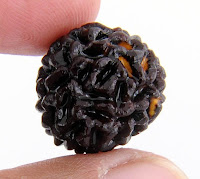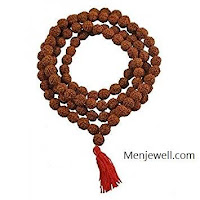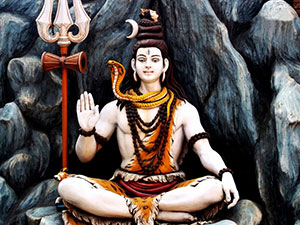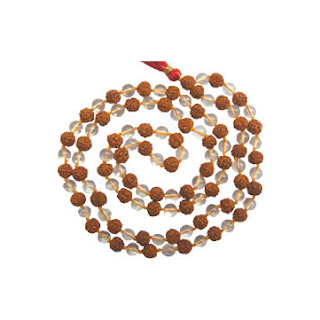Types of One Mukhi Rudraksha - menjewell.com
Types
of One Mukhi Rudraksha

This type of Rudraksha symbolizes Lord Shiva himself. Generally it comes in the shape of cashew nut or half moon. This is the supreme Rudraksha for anyone who want to enjoy all the worldly blessings as well as get devoted to the supreme power. A person wearing this rudraksha becomes Fearless and no amount of negative powers or enmity can affect him. The power of concentration increases, all his sins are destroyed and a feeling of contentment and happiness comes along with Spirituality. The wearer of this Rudraksha begins to feel a detachment from worldly affairs and his inclination towards the supreme power i.e. God increases. This is the only Rudraksha that provides Health, Wealth and Happiness in true sense as it also enhances the Spiritual Growth of the wearer.
è Ek
Mukhi Rudraksha bead is considered as the most auspicious bead. The diety
of this bead is 'Lord Shiva'.
Astrologically, this bead is
under the control of Sun. As the name
indicates, the bead has only one cleft, facet or mukh. There are total four different types of Ek
Mukhi rudraksha. The extremely rare and
priceless 'Round Ek Mukhi', the oval 'Haridwar Ek Mukhi', the flat 'Shiva Pindi
Ek Mukhi' and the famous and commonly
used, the crescent shaped, 'Cashew-nut shaped Ek Mukhi'. Botanically, 'Cashew-nut Ek mukhi' and 'Shiva
Pindi Ek mukhi' are produced under the same species, Elaeocarpus
tuberculatus. The round ek mukhi
bead under the species E. angustifolius
is extremely rare in its occurrence.
Generally, this type of rudraksha is seen in the possession of famous old temples and ashrams, saints and
yogis. Very few lucky people own this bead as a God's Gift and is preserved by
them as family relic.
è The
second type of Ek Mukhi rudraksha is known as 'Haridwar Ek Mukhi
Rudraksha'. This type of bead is oval in
its shape. These type of beads are
available under the species Elaeocarpus serratus. Botanically, it is a morphological variation
of oval three mukhi rudraksha.
Approximately, 99.99% of beads under the species Elaeocarpus serratus
are three mukhi, however, once in a blue moon,
it produces one mukhi beads.
Large no. of these type of beads available in the market are tampered
from the oval three mukhi type. Artisan
beads in this type are produced by sealing off two clefts with the plant resin or by pasting
small pieces of other rudraksha in a cleft region. Artisan beads are also produced by skillfully
removing two clefts. It is important to
note that anatomically, the three mukhi and one mukhi of this type show
similar internal structure. Due to large no. of artisan beads of this
type floating in the market, all Ek mukhi of this type are wrongly stamped as fake beads by people who are not
conversant with morphological studies of rudraksha beads. The famous 100 year old Haridwar based
rudraksha firm 'Aslomal Kanhiyalal' recognizes this type of bead in their
famous book written in Hindi, 'Rudraksha Aur Ratna Rahasya' page no. 67 and
86. Original botanical description of
the species Elaeocarpus serratus mentions that ovary in this species is from
one to three celled.
è The third type of rudraksha is popularly known as 'Shiva-Pindi Ek Mukhi' due to its similarity in its shape with 'Shiva-Pindi'. This type of bead is flat in its shape like a kite. The beads of this type are produced under the species Elaeocarpus tuberculatus The famous 'Cashew-nut Ek Mukhi' is also produced under the same species. Most of the stones or beads under the species Elaeocarpus tuberculatus are with two clefts, the commonly available flat 'Haridwar two mukhi' and very rarely with a single cleft. Stones having three and four clefts are also rarely reported.. Flat type of beads under the above species are wrongly mentioned as 'Bhadrakshas' in the North India, however, it is not correct. 'Bhadraksha' is a totally different species under the plant genus Scaevola as Scaevola fruitescens (Family: Goodeniaceae).
è The
fourth and the most commonly available type is popularly known as 'Cashew-nut
Ek Mukhi'. As the name indicates, the
stones are crescent shaped. This type of stones are available under the species Elaeocarpus
tuberculatus.



Comments
Post a Comment